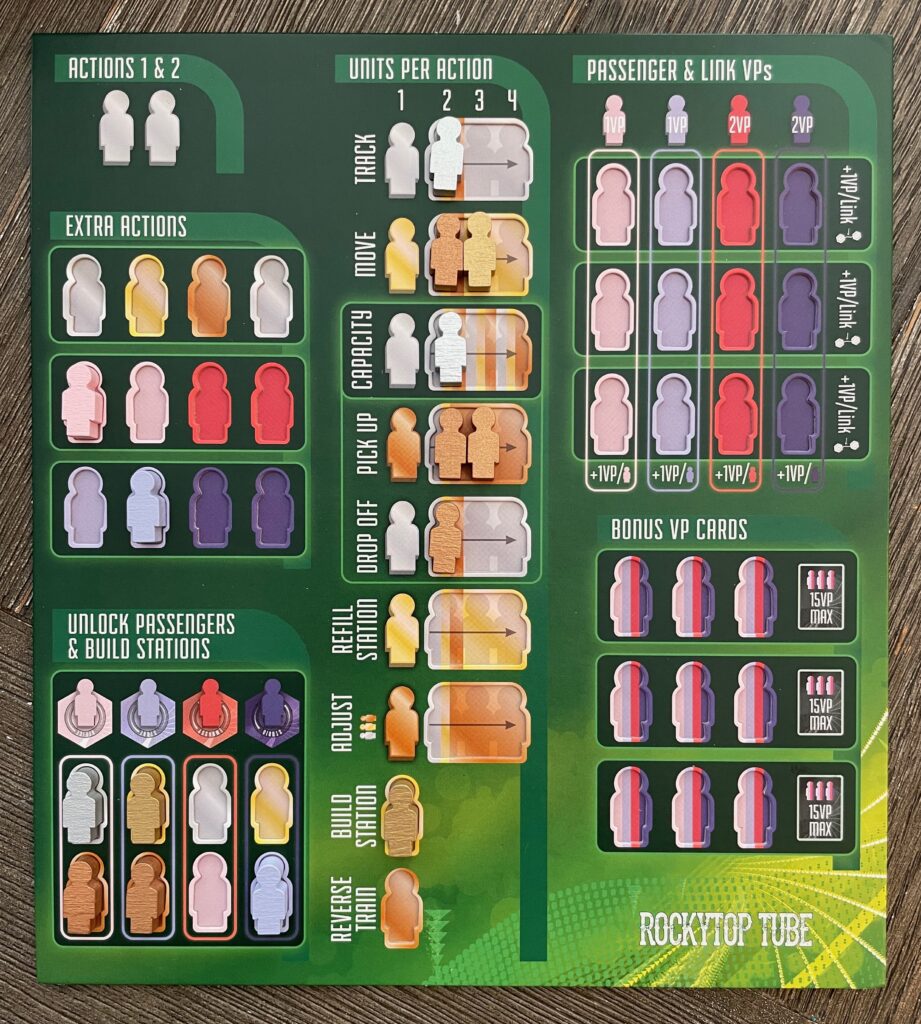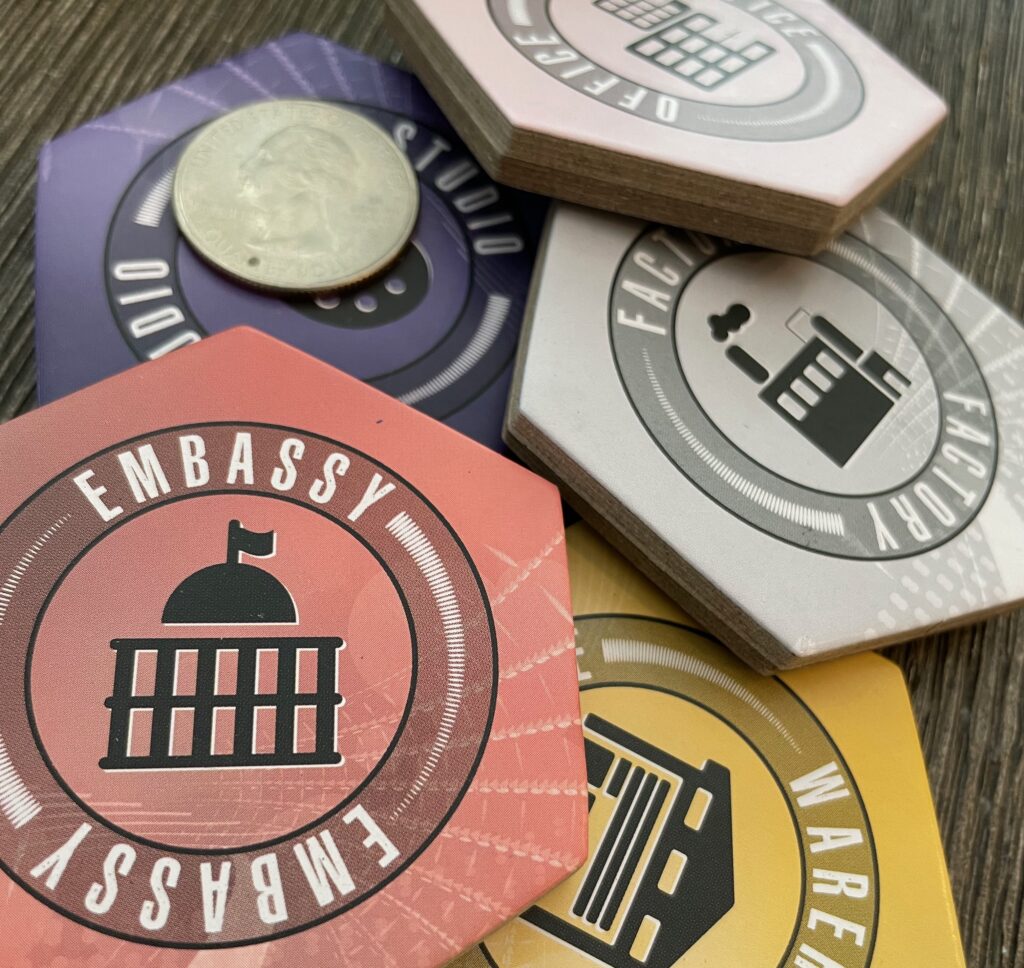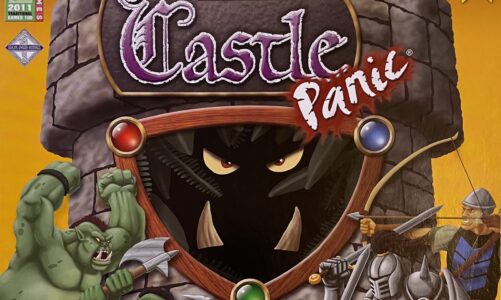One look at those clear track tiles and I knew I needed to play Maglev Metro. We finally got this board game to the table right before the Kickstarter launched for the expansion, mainly to see if we should back it. Let’s take a look at what we think about Maglev Metro by Dale Yu and Ted Alspach and published by Bezier Games.
What’s Maglev Metro all about?
It’s the dawn of a new futuristic era where players will fight to build the finest magnetic levitation rail system in the city. Players will build stations and track tiles while also transporting commuters and robot workers to their destinations.
Gameplay: Berlin vs New York City
Maglev Metro includes a double-layered board that features the city of Berlin on one side, and New York City on the other side. Both sides offer players a different gaming experience. Let’s take a more detailed look:
Berlin
The Berlin board provides players with a more strategic and challenging experience. Players will attempt to build one continuous loop that attaches all of the various types of stations to it. This becomes complicated because reversing your train is a luxury. Until you earn this upgrade, your train must continue in one direction until it hits the end of its line!
New York City
The New York City board offers a lighter gaming experience. There’s a central hub that provides greater flexibility with how you build your track, and how your trains reverse. More robots are on the board when you start, which increases the momentum of the game. These both lead to a faster, less fiddly game overall.
Developing your levitation rail system.
Like many train games, Maglev Metro utilizes a “pickup and deliver” mechanism. In this game, the deliver part of the mechanism also leads to engine building. Each robot or commuter you deliver to the correct destination is removed from the map board and placed onto your player board.
The player board is essentially the brains of your levitation railway system. It dictates the capacity of your trains, how many passengers you can pickup and drop off, your ability to build new railway stations. Pretty much every decision to be made in this game can be found on the player board. Each time you add a passenger to your player board, you’ll get to increase the capabilities of these variables.

Our thoughts on Maglev Metro
The first game we played, we choose to use the Berlin side of the board. The rules aren’t that complicated, but we made countless mistakes during our first play through. Our trains went the wrong way. We crossed over the river without counting it as a cost of 2. Three rails of one color were leaving the same station. It wasn’t pretty. I’m guessing we aren’t the only ones who got tripped up by these rules because the rulebook clearly explains how to fix these errors!
I’m going to take the unpopular opinion (I think) and say that we prefer the New York City side of the board. The Berlin side takes longer to play, and it feels a bit dry by the end. You get a quicker start in New York, and it’s easier to get immersed in the game. The hub in New York City also allows your trains to reverse directions, which is a more difficult task in Berlin.
Pros
- Both Berlin and New York City offer players a suggested opening turn strategy. The first time you play a game like Maglev Metro, it can be difficult to know what to do first because there are so many options. Having some very basic guidelines is helpful.
- The cardboard map board and stations are incredibly thick and chunky, which makes them quite fun to play with. The player boards aren’t quite as thick, but they are double-layered and very nice.
- Players start with 4 bonus cards. These cards change the way you approach the game which creates variability and replayability.
- We love that Maglev Metro includes 2 map boards which each offer different experiences. Had just the Berlin map board been included, I’m not sure we would have enjoyed this game as much.
Cons
- It’s been stated many times before, but it is worth noting that the gold and bronze robots are very similar in color. You need to pay attention to them.
- As much as I love the dual-layered map board, some of the chunky station tiles are too tight to properly fit into their spaces. The instinct is to force the pieces into place, but you’ll risk damaging the tiles.
- Lots of little rules to keep track of which can lead to errors during gameplay.
Overall, we enjoyed Maglev Metro. I was really excited to see the Kickstarter launch for the expansions. Some of the map boards looked particularly appealing, and for a game like this, I think extra maps is a really great thing. But the price! Ouch. So we’ve passed for now. Looking forward to seeing the expansions in retail!





